Algorand and the blockchain trilemma - Crypto Academy / S5W4 - Homework post for nane15.
Q1 : What is Algorand blockchain?
Before I start to explain what the Algorand blockchain is, I want to establish the fact that the blockchain is not really a trilemma as Vitalik Buterin Lee us to believe. This is because is a blockchain is really a trilemma it has to do away with either one of the important characteristics of a blockchain that is it should be either scalable and secured or secured and decentralized or decentralized and scalable but that’s not the case because some blockchain have found working solutions for their blockchain to be able to contain all three. An example is the blockchain we will be talking about today which is the Algorand blockchain.
Algorand blockchain was founded by Silvio Micali in the year 2019. When you observe blockchains that were founded in the BTC and Ethereum era, they are affected by the trilemma. All the blockchains that are still new are created to solve these problems hence the Algorand blockchain was developed to be able to provide the users with all these characteristics (scalability, security and decentralization ).

Founder of Algorand blockchain : Silvio Micali
But how does this blockchain achieve all this characteristics. Algorand uses different consensus algorithm from the other blockchains (BTC and ETH). The pure proof of stake algorithm (PPos) helps to achieve scalability at the same time being decentralized because it used the VRF (verifiable Random Function)
The verifiable random function is responsible for randomly selecting validators in the blockchain. So in the blockchain those who hold the tokens will be chosen randomly to verify and validate transactions into a new block. So know one actually knows who the next validator will be. With this function everybody can be a validator as long as you hold the token. This has help keep the blockchain decentralized and also greatly increase its scalability. For every 4.5 second, a new block is produced. It also processes up to 1000 transactions per second.
The next aspect of the Algorand blockchain is how it’s protected. For me I think it’s a necessity that all blockchains are very protected so that we don’t lose our assets. The Algorand blockchain employs smart contracts into the blockchain due to the differences purposes they perform, the smart contracts are categorized into three.
The first set of contracts are responsible for making sure that the assets users send and receive are secured it also validates signed signatures in the blockchain. The second set of smart contracts allows users to able to safely request assets from other users. And also Protect their data. The third set of contracts exhibits the characteristics of the first and second set.
The Algorand blockchain has its own native token which is called the ALGO as at the time of doing this assignment according to the coin market cap the token is valued at $1.54, ranks at #20 with a market dominance of 0.43% and a volume of 0.03257. See screenshot below.
Q2 : What is PPoS?
PPoS simply stands for pure proof of stake, which is a consensus algorithm. If you don’t know what a consensus algorithm is, it’s simply a way the blockchain agrees on a single data. The consensus algorithm of each blockchain varies. The PPos is used in the Algorand blockchain as I have mentioned in my above explanation. For every new consensus algorithm that is developed it’s main aim is to be better than the previous. This consensus algorithm makes the blockchain very scalable and at the same time making it very decentralized.
Let me explain to you how this consensus algorithm works in the blockchain. Users who hold the ALGO token of the blockchain can be potentially selected to be a validator. (Verify and validate transactions in the block). What happens is that before a transaction is validated and added to the blockchain. Users that hold the ALGO token in the blockchain will be Randomly chosen using the VFI (verifiable random function) this function will look at the list of token holders in the blockchain and choose users to propose blocks.
The users chances of being selected are greatly increased by the number of tokens they hold. Just think of it like a buying lottery tickets if you want to increase your chances of wining you need to purchase more tickets. Buying just one ticket slims your chances of wining. And in the blockchain holding few ALGO tokens gives you less chance of being selected.
The next phase of this protocol after randomly selecting users to propose blocks note that this proposal could either be to increase the size of a block or decrease the size of a block so once that has been accomplished the next thing to do is to reach consensus ( to agree on whether to accept the proposal or decline ). This is done by voting , again the voting is carried by users (who hold tokens ) the votes are proportional to the tokens they hold. This implies that the more tokens you hold the weight your vote has. Please note that those who proposed the blocks will not be voting.
Unlike the other protocols where certain people are tasked to proposing and validation of the blocks this is done Randomly. This helps safe guard the blockchain form attacks because the attacker wont know where or who to attack since nobody knows the person going to be selected everything is done randomly. Thereby greatly increasing the security, scalability and as well as making it decentralized because everyone has the chance to be a validator.
Q3 : Explain the advantages and disadvantages of PPoS.
Let’s look the good aspects of this consensus algorithm as well as the negative aspects. Like it or not everything has its positives and negative. But when the positive aspects over shadows the negative we always manage with the little bad.
Advantages of PPos
1 - No one feels cheated when it comes to selection of people to propose the blocks. This is because it’s not selected by a human or no main pattern is followed when selecting the users but rather it’s randomly down so everyone feels ok.
2 - The consensus algorithm has greatly increased the scalability of the blockchain because for very 4.5 Second a block is created and it persons 1000 transactions every second compared to the scalability of Bitcoin this is super super fast.
3 - The blockchain is protected from attacks as I have already explained with the DPos certain people are selected from either the validation or proposing of new blocks so an attacker can easily target them. But over here nobody knows who the next person is going to be making it hard for someone to target them.
4 - The protocol ensures decentralization. This term simply means power is given to the users because it’s the users that will suggest either the shrinking of the blocks or increase in sizes of the blocks and it’s the same users that will vote on that.
5 - Doesn’t consume any energy as compared to the proof of work consensus algorithm used in Bitcoin due to the requirement of high power machines to solve complex mathematical problems they consume a high energy. With this type we don’t need super computers hence the energy consumption rate it at the minimum.
6 - The token of the platform is not that expensive and users can easily purchase it and it’s also listed in the top exchanges so you don’t have to stress yourself when you are looking to buy the token. And it’s also affordable at $1.54.
After exploring it advantages, let me also talk about the disadvantages of this consensus algorithm. However the disadvantages are not many as compared to the advantages and that’s a good thing.
Disadvantages of PPos
1 - I think that in other to increase your chances of being selected to propose a block in the blockchain you will need to hold plenty ALGO tokens what about those who can’t buy enough tokens? Their chances of selection are very slim and they may even never be selected.
2 - The by product When you verify and validate a transaction is the person gets rewards the problem is the rewards are small.
Q4 : Do you think Algorand really solved the blockchain trilemma? Explain your answer.
Yes!! Definitely, the Algorand blockchain with the help of the PPos consensus algorithm has really proven that the blockchain is not a trilemma and has solved these problems(scalability, security and decentralized ) other blockchain face. Let’s talk about how it has solved this problem in an orderly manner.
Firstly, let’s start with Decentralization, Looking at how the consensus algorithm works we see that the users that are selected for proposal of the creation of new blocks and other aspects. It is done Randomly no one knows who the next validator would be it could be you or me at anytime so everyone in the blockchain has the chance of become a validator once you hold the tokes of the blockchain.
So with this the users know that anyone chosen is not because he likes him or her but it’s done randomly this helps promotes transparency in the platform.
Secondly, Security, this characteristic of the blockchain many developers don’t usually ignore this. Because this the main thing we look out for before we invest in the blockchain. Whiles some blockchain are still struggling from attacks, Algorand blockchain is built in such a way that the users selected for validation of the blocks are not a particular group of people constantly doing the same over and over again. But VRF selects them randomly so the attacker won’t know who to attack because the identity of the next validator is not known to anybody.
Last but no least, Scalability, this is simply how many transactions can be processed in a single Second according to my research the Algorand blockchain generates a new block every 4.5 Second and can handle up to 1000 transactions in a second so it can perform 60,000 transactions on a minute. Let’s compare this to Bitcoin scalability, BTC can handle 7 transactions per second and approximately 420 transactions in a minute. That’s 59,580 less than what this blockchain can handle this alone should tell you how highly scalable the blockchain is.
So I think that the blockchain have actually solved the blockchain trilemma. Maybe Mr Vitalik Buterin Ought to come up with another concept because not all blockchains are a trilemma.
Q5 : Do you think PPoS is better than PoW? Explain your answer.
Yes !!! Definitely, POW is also a consensus algorithm that is used in the Bitcoin blockchain, which requires the use of high power super computers to solve complex mathematical problems (Nonce values) to be able to validate and verify transactions and add them to the blockchain.
One of the reasons why I think that PPos is better than the POW is because it requires very complex things before you can validate the transaction. This super computers are very expensive and cost or repairs is very enormous and not only that, the machine burns a lot of energy in other to reach consensus. When you look at the PPos, nothing of that such is needed to reach consensus no super computers (that are not cheap to come by ) plus no energy is burned in the process of achieving consensus. Rather users are selected to propose which is later voted on.
Secondly looking at the scalability both consensus algorithm provided that of PPos is far much better than POW. this is as a result of how they achieve consensus let’s compare the scalability two blockchain that uses the PPos and PoW. Let’s start with the Ethereum blockchain which uses the proof of work algorithm is a bit faster than BTC it can handle 13 transactions per second approximately 780 transactions a minute whiles the Algorand blockchain which uses the PPos, for every 4.5 Second a block is produced and can handle up to 1000 transactions in a second so it can perform 60,000 transactions on a minute. This should tell you that the PPos is better than POW. That is why it’s no doubt that Ethereum wants to change the POW to POS, the proof of stake is even better than the proof of work.
Q6 : Do you think PPoS is better than PoS? Explain your answer.
Yes! I think the PPos is actually better than the PoS algorithm, the proof of stake consensus algorithm simply implies selection of validators in the blockchain based on the number of tokens they have locked up. The proof of stake was developed after the proof of work was developed this is because developers noticed the problems of the proof of work and hence developed the proof of stake. The same thing also applies here the PPos stake is also developed to be better than the PoS.
Why I say that the PPos is better than the PoS is because in the proof of stake, the next validator or the validators can be easily targeted because we all know that the person who locks up most assets becomes the validator in the blockchain so it’s sets a target on Their backs any hacker can easily attack them. But for the PPos, the validator will not be known because it is randomly selected.
Secondly, I think that the PoS is not as decentralized as they say it is because in validating the blocks in the blockchain, like I said earlier users with the most tokens locked up will become the validator. So users who have the most token (whales ) will always controlling the platform leaving the less privilege so I don’t think it’s purely decentralized but when you compare it with the PPos, everyone has the opportunity to be a validator (once you hold the assets) and you don’t even have to lock up your asset away for long time.
Let’s compare the scalability of the two consensus algorithm and determine which one is better in that aspect. I will use the cardano blockchain because it runs on a proof of stake consensus algorithm. Cardano can process about 250 transactions per seconds which is faster than the proof of work. You see why I said the proof of stake is better than the proof of work? When you look at the number of transactions Algorand blockchain can handle in a second which is 1000 transactions you will see that the PPos is better than the proof stake.
Q7 : Explore and explain an ALGO transaction using algoexplorer.io ( Screenshots required)
To be able to explore and explain the ALGO transaction we will have to access this website
Exploring the website
1 - when you access the website, the first thing you will see is the search engine where you can actually locate a transaction by searching using the transaction address. Just below it displays latest block, current supply, Total supply, online stake, ALGO price, Block Tx speed, Accounts and transaction per second.
2 - When you scroll down you will see a graphical representation of the Txs, the latest block created and also the latest Transaction.
Explaining ALGO transactions
1 - Since we now have seen how the website is let’s head to the latest transactions section and click on the latest transactions.
2 - When you click on the latest transactions, you should see the transactions overview which will contain details like the transactions Id, block and type.
From the screenshot above below are the details
Transactions ID : CITNLJX6IY5YMHZYTOZ2WNSGSJK4BUCERYX4GJLQJHHRUJKKQ4LQ
Block number : 17946029
Type : Transfer
3 - We can scroll down to see the transaction details which will contain details about the sender address, amount sent and receiver address.
From the screenshot above below are the details
Sender Address : XFYAYSEGQIY2J3DCGGXCPXY5FGHSVKM3V4WCNYCLKDLHB7RYDBU233QB5M
Receiver Address : XFYAYSEGQIY2J3DCGGXCPXY5FGHSVKM3V4WCNYCLKDLHB7RYDBU233QB5M
Amount Transferred : 0
4 - For more information about the transaction, click on more information. This will provide the sender and receiver balance as well as the transaction fee that was charged.
From the screenshot above below are details ;
Sender balance : 191.971059 ALGO
Receiver balance : 191.971059 ALGO
Fee : 0.001 ALGO
Q8 : Carry out an analysis of the price of ALGO from the beginning of the year to the present. Via graphics (screenshots required.)
At the beginning of the year that is in January, the price of ALGO was at $0.35, the price of ALGO was began to rise little by little as of 2nd of January the price was at $0.38 as at 9th of February ALGO recorded its first $1.006 with a 24hrs volume of 1.1billion The rise of the coin continued this is as a result of traders opting in or buying the coin. Pushing the price of coin to $1.4 as of 15th May, so when most traders so that they had made profit from the coin so they stated selling the coin causing the price of coin to decline to a price of $0.6 on 27th June you can see that the coin really decline.
Until May where the price of the asset started struggling from $0.8 to $1 the price kept dipping a little and rising a little but creating no clear visible pattern as can be seen from the screenshot above until September where the breakout was found, the price broke out hitting its ATH of $2.3, after it hit that price a sharp decline was seen as a result of traders selling the coin. By first October the price has dipped to $1.7. The battle began between the buyers and the sellers. The price of the asset will dip and rise a little until today at the time of this assignment stands at $1.49
In my analysis above I added the RSI indicator to the chart. As this indicator is very good to determine over bought zones and over sold zones when the RSI moves above 70, that is the over bought zone and it moves below 30 that zone is termed as the over sold zones.
please note that this is not a investment advise but I believe we are yet to experience another decline in the price of the coin in the coming days after which a breakout will happen just like what experienced in September.
Conclusion
I think that the Algorand blockchain has found a way to contain all the three characteristics of a blockchain and the term blockchain is a trilemma can not be used again I believe that a blockchain should have all these characteristics to be able to function to its fullest. In a few years to come I know the blockchains will switch from the proof of work and proof stake and start using the pure proof of stake consensus algorithm. It’s no doubt very scalable and also helps makes the blockchain very decentralized.
It’s no doubt that Ethereum is trying to change the consensus algorithm in this era we live in we don’t need slow buy Fast and reliable blockchains. Thank you professor for this wonderful lecture.
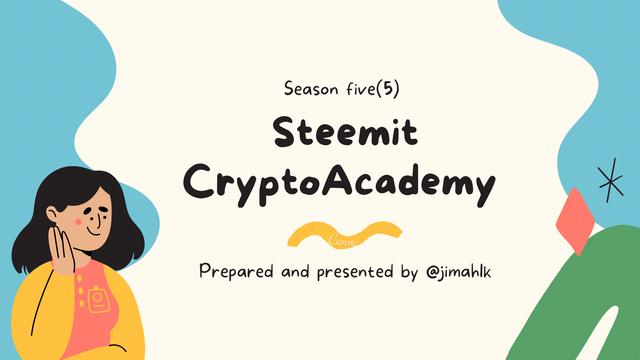

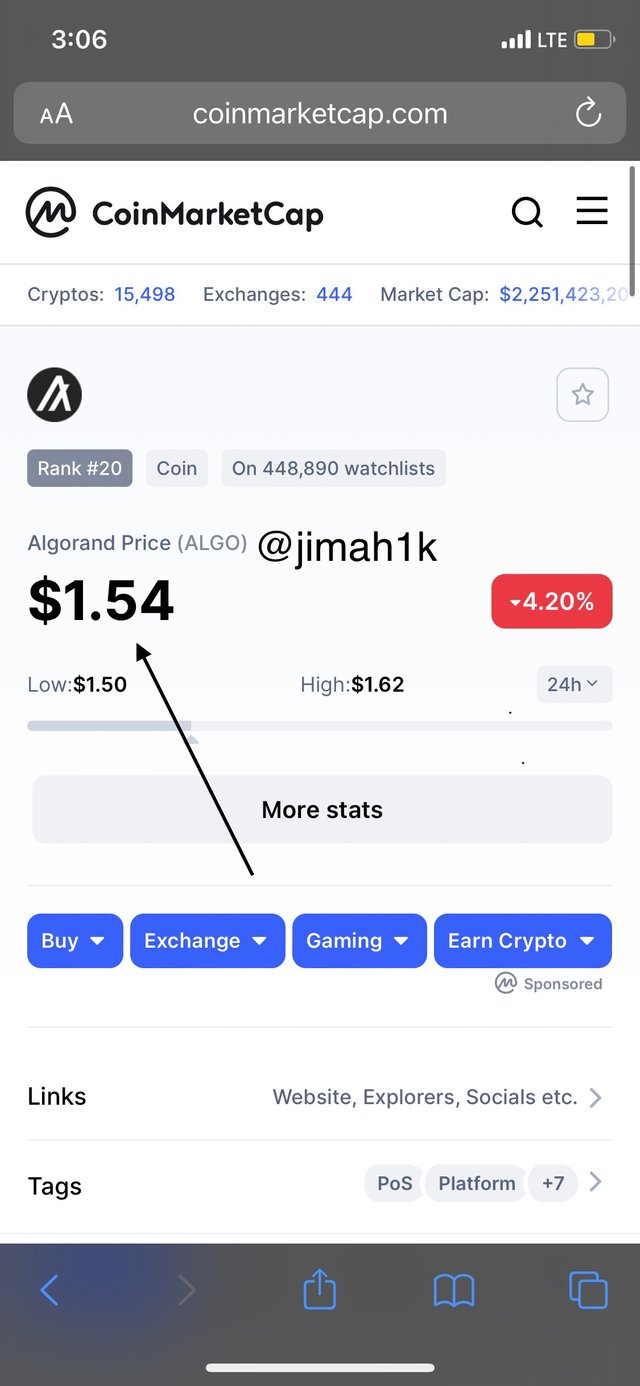

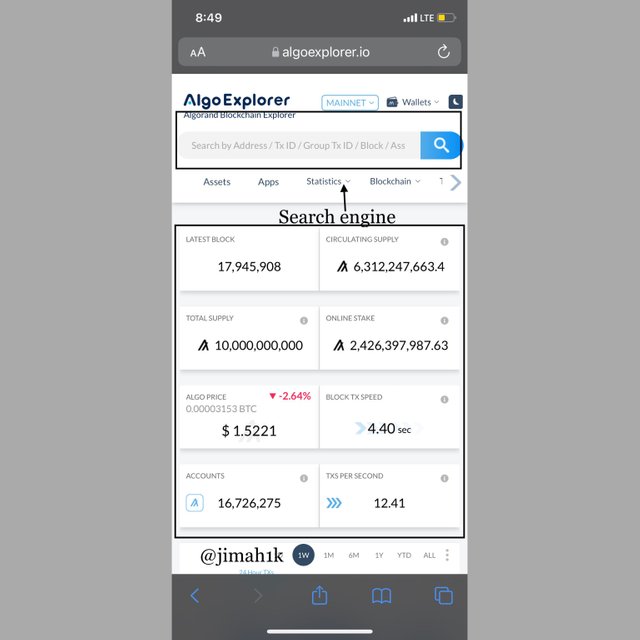
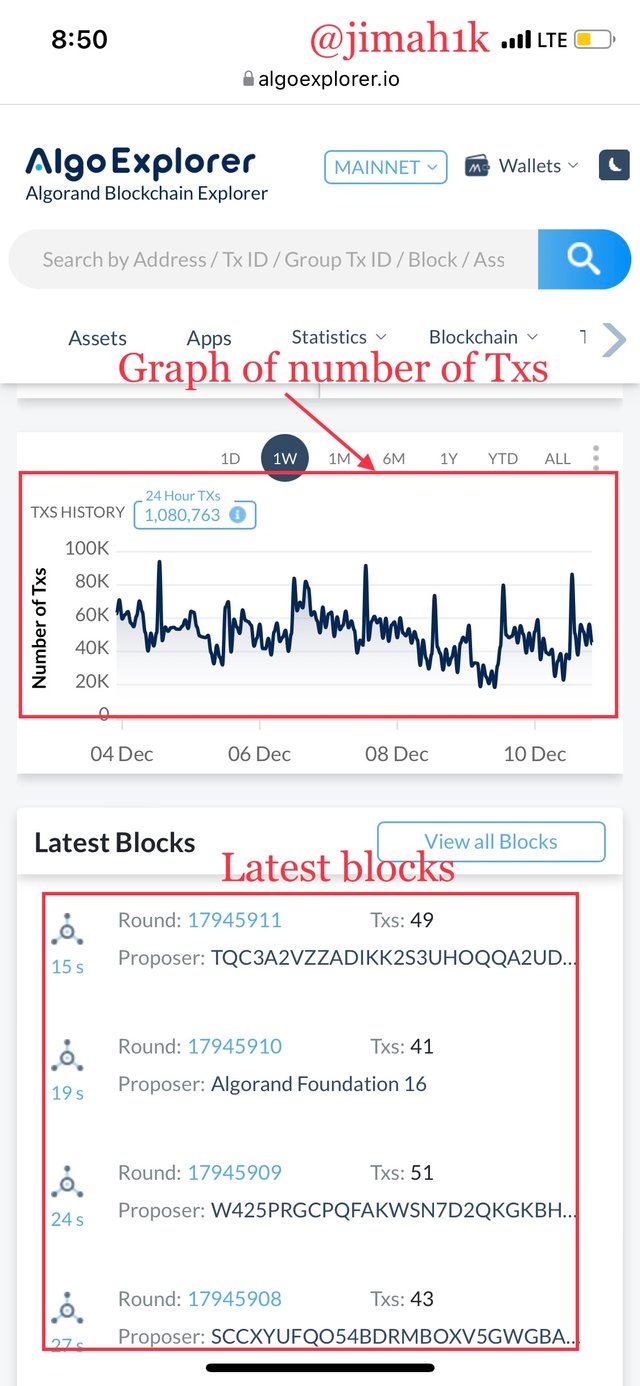

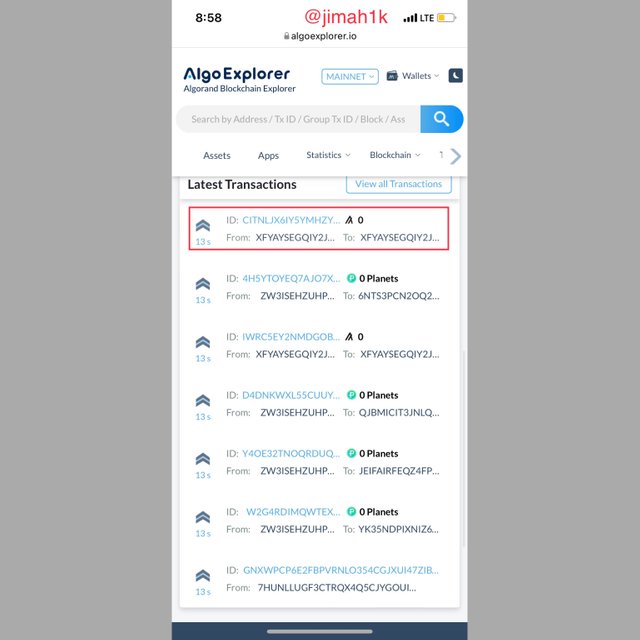
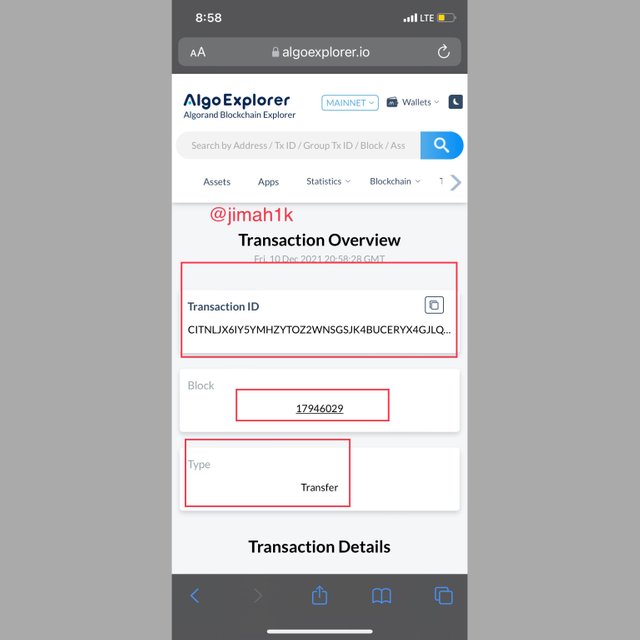
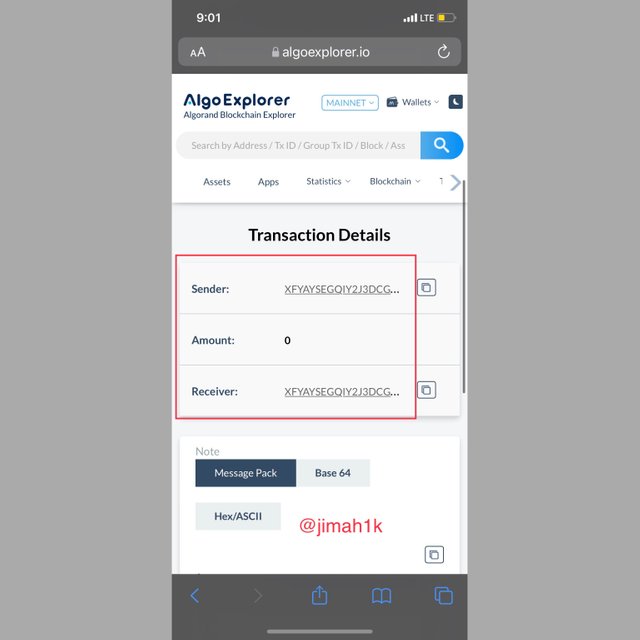

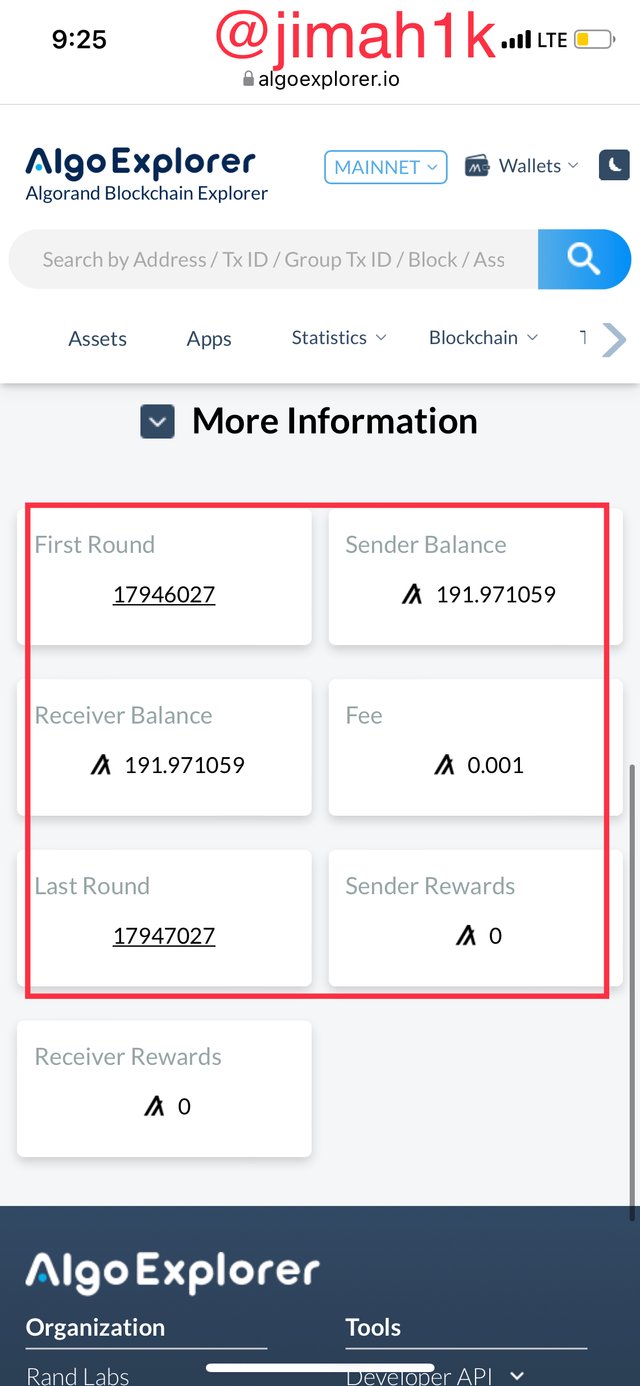
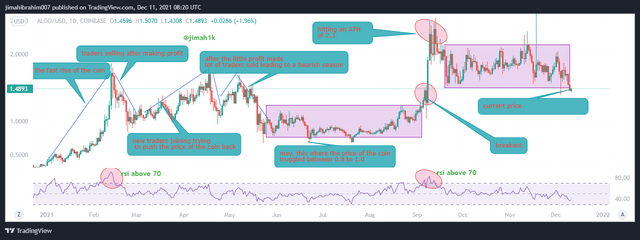

Upvoted! Thank you for supporting witness @jswit.
